
- Jewelry Market
Diamond Clarity: A Deep Dive
Table of Contents
Why Does Clarity Matter?
• Brilliance: Higher clarity diamonds often exhibit exceptional brilliance due to the absence of light-obstructing inclusions.
• Value: Clarity is one of the four Cs (cut, color, clarity, and carat weight) that determine a diamond’s price.
• Confidence: Understanding diamond clarity empowers you to make informed purchasing decisions.
What are diamond inclusions and blemishes, and how do they affect a diamond’s clarity?
Inclusions (Internal Characteristics)
These are internal characteristics that form within the diamond during its growth process. They can range from tiny crystals to clouds or feathers..
• Crystals: These are mineral crystals enclosed within the diamond. They can be colorless, colored, or dark.
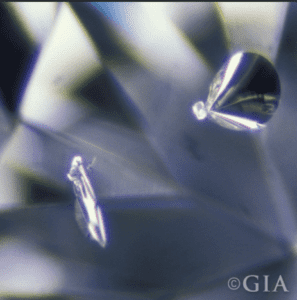
• Cloud: Many tightly grouped pinpoints that might be too small to distinguish individually but together have a hazy appearance.
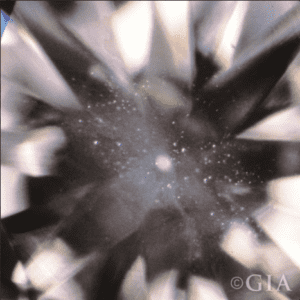
Feathers: Internal fractures or cracks within the diamond. General trade term for a break in a gemstone, often white and feathery in appearance.
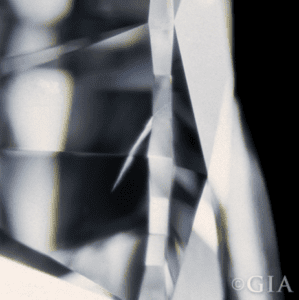
• Cavity: An angular opening created when part of a feather breaks away or when a surface-reaching crystal drops out or is forced out during polishing.

• Chip: A shallow opening caused by damage to the stone’s surface that typically occurs at a girdle edge, facet junction, or culet.
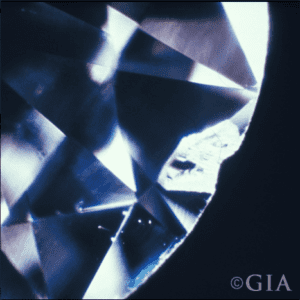
Bearded Girdle: Very small feathers that extend from the girdle surface into the stone; can result from the cutting process.

• Bruise: A tiny area of impact accompanied by very small, root-link feathers; typically occurs at a facet junction. Courtesy of Gary Roskin, G.G., F.G.A.

• Grain Center: A small, concentrated area of crystal distortion; can be white or dark, and might have a thread-like or pinpoint-like appearance.
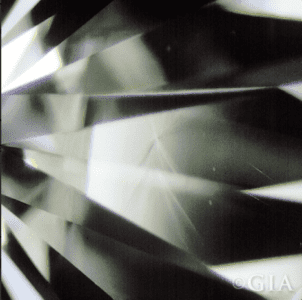
• Indented Natural: A portion of the rough diamond’s original surface that dips below a polished diamond’s surface.

• Internal Graining: Lines, angles, or curves that might appear whitish, colored, or reflective, or affect transparency at 10X; caused by irregularities in crystal growth.
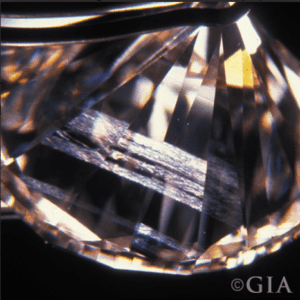
• Internal Laser Drilling: Laser drilling within a diamond that creates a surface-reaching feather, or expands a pre-existing feather around a dark inclusion so that it reaches the surface. The feather then provides access for bleaching to decrease the visibility of the inclusion.
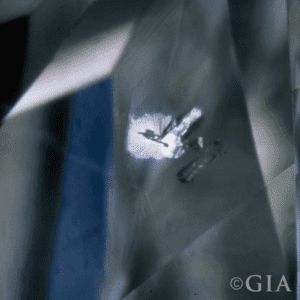
• Knot: A white or transparent diamond crystal that extends to the surface after fashioning.
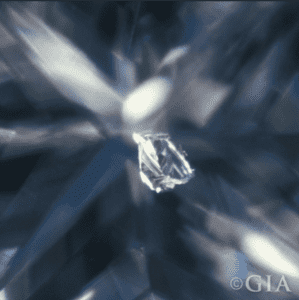
• Laser Drill-hole: A tiny, surface-reaching tunnel produced by a laser light beam.

• Needle: A thin, elongated crystal that looks like a tiny rod at 10X.

• Pinpoint: A very small crystal that looks like a tiny dot at 10X.
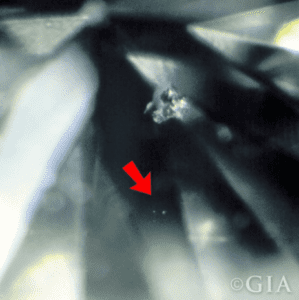
• Twinning Wisp: A series of pinpoints, clouds, or crystals that forms in a diamond’s growth place; associated with crystal distortion and twinning planes.
Blemishes (External Characteristics)
Blemishes are imperfections on the diamond’s surface, often caused by cutting or polishing.
Abrasion: A series of minute nicks along the facet junctions of a fashioned
diamond; gives the edges a white or fuzzy appearance.
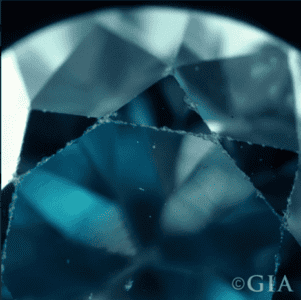
Extra Facet: A facet that’s not required by the cutting style, placed without regard for the diamond’s symmetry; most often found near the girdle. Courtesy K.R. Gems & Diamonds International.
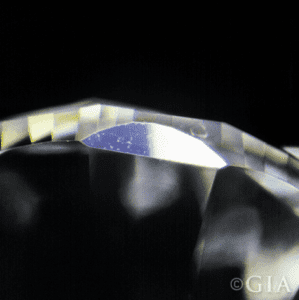
Lizard Skin: Wavy or bumpy area on the surface of a polished diamond.
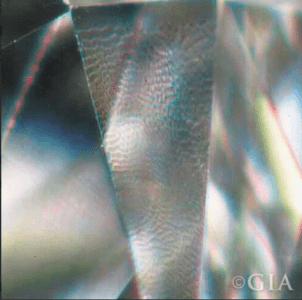
Nick: A small notch on a facet junction with no readily apparent depth at 10X, usually along the girdle edge or at the culet. Courtesy of Gary Roskin, G.G., F.G.A.
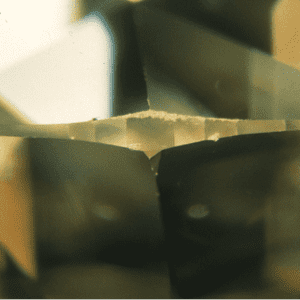
Pit: A small opening that looks like a tiny white dot. Courtesy of Gary Roskin, G.G., F.G.A.
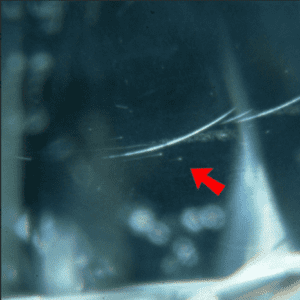
Polish Lines: Fine parallel grooves and ridges left by polishing; can occur on any facet but do not cross facet junctions; transparent or white.
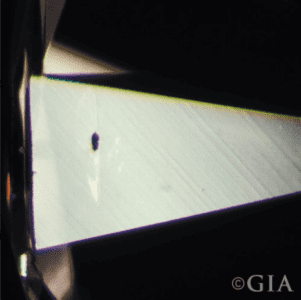
Burn Mark: Hazy surface area that results from excessive heat during polishing; also called a burned facet.

Rough Girdle: Irregular or granular girdle surface.
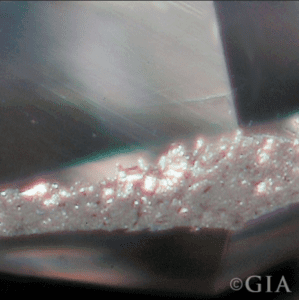
Scratch: A thin, dull, white line across the diamond’s surface; shows no apparent depth at 10X.
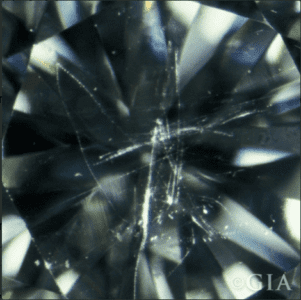
Surface Graining: Similar to internal graining, except it appears on the surface; results from irregularities in crystal structure.
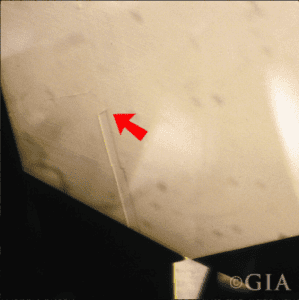
The visibility of inclusions and blemishes affects a diamond’s clarity grade. A flawless diamond has no inclusions or blemishes, while a diamond with visible imperfections will have a lower clarity grade.
How is diamond clarity graded, and what do the different clarity grades mean?
The Gemological Institute of America (GIA) has developed a clarity scale to grade diamonds based on the visibility of inclusions and blemishes. The scale ranges from Flawless (FL), which means no inclusions or blemishes are visible under 10x magnification, to Included (I), where inclusions are obvious to the naked eye.
Here’s a breakdown of the clarity grades:
• Flawless (FL): No inclusions or blemishes visible under 10x magnification.
• Internally Flawless (IF): No internal inclusions, but may have minor blemishes on the surface.
• Very, Very Slightly Included (VVS1 and VVS2): Inclusions are extremely difficult to see under 10x magnification.
• Very Slightly Included (VS1 and VS2): Inclusions are difficult to see under 10x magnification.
• Slightly Included (SI1 and SI2): Inclusions are noticeable under 10x magnification.
• Included (I1, I2, and I3): Inclusions are obvious under 10x magnification and may affect the diamond’s appearance.

How Clarity Affects a Diamond's Appearance
The visibility of inclusions and blemishes depends on several factors:
• Size of the inclusion: Larger inclusions are more noticeable.
• Color of the inclusion: Dark inclusions are more visible than light ones.
• Location of the inclusion: Inclusions near the diamond's crown or girdle are more likely to be visible.
• Cut of the diamond: A well-cut diamond can help to mask inclusions.
How do I choose the right diamond clarity based on my budget?
• Your budget: Higher clarity grades come with a higher price tag.
• The size of the diamond: Larger diamonds may show inclusions more prominently.
• The setting of the diamond: A setting can help to hide inclusions.
• Your personal preference: Some people prefer a slightly lower clarity grade to save money.
Remember: While clarity is important, it's just one factor to consider when buying a diamond. The overall beauty of the diamond also depends on its cut, color, and carat weight.
Diamond Clarity: The Key to Confident Jewelry Purchases at Artemies
At Artemies, we prioritize transparency and customer satisfaction. Every diamond we offer comes with a detailed clarity grade and description. Our expert gemologists meticulously assess each diamond to ensure the highest quality standards.
By providing comprehensive diamond specifications, including clarity information, Artemies empowers you to select the perfect diamond for your jewelry piece with confidence.
Source: https://www.gia.edu/
Related Posts
Fall in Love with Jewelry, Stories, and Secrets
Join Artemies Magazine for insider jewelry tips, trend updates, and subscriber-only discounts.



